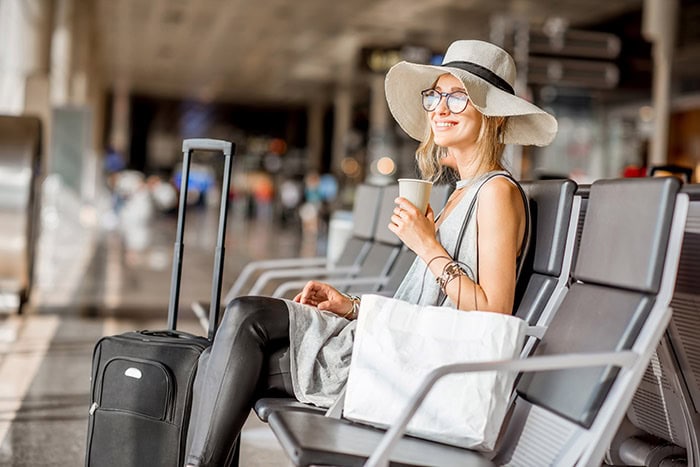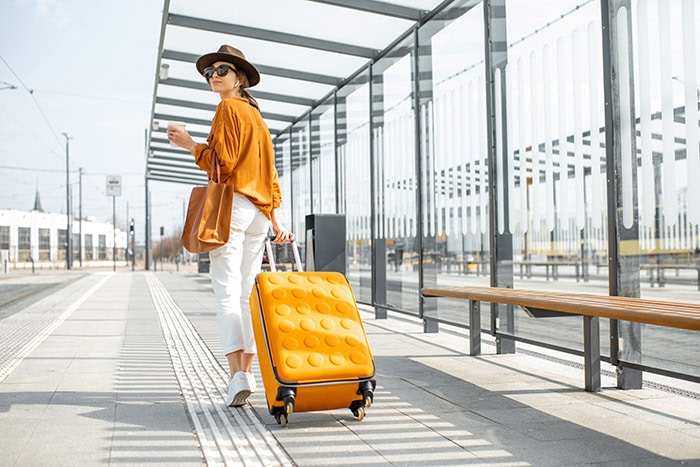Botox and Air Travel: What You Need to Know
Yes, you can fly after Botox injections. There is no scientific evidence that flying — or cabin pressure changes — will cause Botox to move or reduce its effectiveness. Botox binds to the targeted muscles within hours, and by the time you board a plane, it’s already starting to settle.
However, many practitioners, including myself, recommend waiting at least 4 hours before flying after Botox. This gives your skin time to recover from any minor bruising or swelling and reduces the (theoretical) risk of Botox migration.
At my cosmetic skin clinic in Wimbledon, I often see patients from Raynes Park, Kingston, Surbiton, Richmond, and across South West London who want to know whether it’s safe to fly after Botox. Planning holidays, travelling for work, let’s look at what you should consider before getting on a flight after Botox.
How Long After Botox Before You Can Fly?
It’s generally safe to fly from 4 hours after Botox. The Botox itself won’t be affected by cabin pressure, but flying too soon can sometimes worsen side effects such as:
- Bruising – air pressure and movement may make small bruises more noticeable
- Swelling – changes in circulation can exaggerate puffiness around injection sites
- Tenderness – if your skin is still sensitive, long flights may feel uncomfortable
- Migration– Unintentional spread of botox to neighbouring muscles and unwanted adverse effects.
For the most comfortable experience, wait at least a full day before flying. If possible, plan your treatment at least two weeks before travel — especially if you want the Botox fully “settled” for a special event like a wedding, reunion, or photoshoot.
Before you even get to the airport, it’s important to follow simple early aftercare, including staying upright for a short time after your injections – I cover this in my guide on how long after Botox you can lay down.
Does Cabin Pressure Affect Botox?
No, cabin pressure does not affect Botox.
Botulinum toxin binds quickly at the neuromuscular junction and does not “float around” waiting to move with air pressure.
The idea that flying can move Botox is a myth — the real concern is about bruising or swelling being more noticeable in the first 24 hours, rather than the Botox itself being altered.
For reference, the NHS guidance on botulinum toxin injections also lists bruising and swelling as normal short-term effects, not anything to do with flying.
Flying is just one part of early aftercare – people also ask about everyday things like showering and washing their hair. If that’s on your mind too, you may find my guide on whether you can shower after Botox helpful.

Cabin pressure changes during flights do not affect Botox once it has started to settle.
Should I Get Botox Before a Holiday or Event?
Yes — but it’s important to plan ahead. If you want Botox for a holiday, wedding, or special event, try to schedule your appointment at least two weeks in advance. This timing allows:
- Full results to develop – Botox takes 7–14 days to reach its maximum effect.
- Any minor bruising or swelling to fade – giving your skin time to look clear and refreshed.
- Your results to settle naturally – so you look smooth and confident in photos without appearing “freshly treated.”
Many of my patients in Wimbledon, Raynes Park, Kingston, Surbiton, and across South West London find this two-week window ideal for looking their best on holiday or at important life events. It ensures you can enjoy your time away without worrying about aftercare or side effects.
What to Consider Before Flying After Botox
Botox anti-wrinkle injections are a quick treatment with very little downtime, but it’s still important to plan things like flights and travel in the first few days.
Flying is really just one part of early aftercare – following simple Botox aftercare advice in the first 24–48 hours helps to minimise bruising, swelling, and discomfort, whether you’re staying at home or going abroad.
Here are some key points to keep in mind if you’re planning to fly soon after treatment:
- Bruising and swelling – these are common after Botox and may look slightly worse during a flight because of changes in cabin pressure and circulation. This is temporary but worth considering if you want to look your best on arrival.
- Theoretical migration – while highly unlikely, some practitioners recommend caution within the first 24 hours. Waiting at least a day or two before flying gives your Botox time to settle securely.
- Event timing – remember that Botox takes 7–14 days to reach its full effect. If you’re preparing for a wedding, holiday, or important work trip, try to book your appointment at least two weeks in advance.
- Aftercare rules still apply – whether you’re at home or in the air, you’ll need to follow the basics: stay upright for 4 hours, avoid rubbing your face, and skip strenuous activity in the first 24 hours.
By keeping these points in mind, you can plan your treatment and travel confidently, knowing you’ll get the safest and most natural results.
What Happens If You Fly Too Soon After Botox?
Flying too soon after Botox is unlikely to damage the treatment itself, but it can make the early side effects more noticeable. Possible issues include:
- Increased swelling during the flight, as cabin pressure and changes in circulation can temporarily affect the skin.
- Bruises appearing darker or spreading more easily, since blood flow shifts while in the air.
- General discomfort if your skin is still tender at the injection sites.
These effects are temporary and not dangerous, but they may make you feel self-conscious — especially if you’re flying to attend an event or meeting. For peace of mind, most practitioners recommend waiting 24–48 hours before flying, so you can travel comfortably and enjoy your results with confidence.

Flying too soon after Botox may worsen swelling or bruising, even if it doesn’t harm the treatment itself.
Additional Questions People Ask
Can I Fly the Same Day After Botox?
It’s best to wait at least 4 hours before flying after Botox. While flying the same day is unlikely to cause serious issues, side effects like bruising or swelling may look or feel worse in-flight. Giving yourself a day makes the journey far more comfortable.
Before you even get to the airport, it’s important to follow simple early aftercare, including staying upright for a short time after your injections – I cover this in my guide on how long after Botox you can lay down.
Can I Fly After Botox in My Forehead?
Yes, you can fly after forehead Botox. The treated muscles are not affected by cabin pressure, and Botox binds quickly at the injection site. The only consideration is allowing a short recovery window (4 hours) to reduce the risk of bruising or puffiness during the flight.
Can I Fly After Botox and Fillers?
Flying is safe after both Botox and dermal fillers, but fillers can sometimes cause more swelling, especially in the lips. If you’re planning both treatments, it’s best to schedule them at least 1–2 weeks before flying, particularly if you want to look your best for an event.
Does Flying Affect Botox Results Long Term?
No, flying does not shorten the lifespan of Botox. The results will last the usual 3–4 months regardless of travel. What matters most is following good aftercare in the first 24 hours and giving yourself time to heal before boarding a plane.
What If I Have to Travel Straight After Botox?
If you must fly within hours of treatment, it’s still generally safe. Just be extra careful: stay upright for at least 4 hours, avoid alcohol, and don’t rub or touch the treated areas. Any bruising that develops may just be more visible during your trip.

Flying after Botox is safe — just wait 24–48 hours to let your skin settle for the best results.
Summary: Flying After Botox
| Question | Answer |
| Can I fly after Botox? | Yes, flying is safe. |
| How long should I wait? | At least 24–48 hours. |
| Does cabin pressure move Botox? | No, it’s a myth. |
| What’s the main risk? | Slightly worse bruising/swelling. |
| Best timing for trips/events? | Get Botox 2 weeks before. |
Final Thoughts on flying after Botox
Flying after Botox is safe — the main issue is comfort, not safety. Waiting a day or two helps minimise bruising and swelling, but the treatment itself won’t be harmed by flying.
📍 If you’re considering Botox in Wimbledon, Raynes Park, Kingston, Surbiton, Putney, or anywhere in South West London, I’d be happy to guide you through safe aftercare and treatment plans tailored to your lifestyle.
During your free consultation, we’ll discuss your skin concerns, assess your facial structure, and decide together which treatment aligns best with your needs.
Book your free consultation here →
Or call me directly: 07702 389 636
Warm regards,
Dr Suresh Mohan
Contact Dr Suresh Mohan
Considering Book FREE consultation! My clinic is dedicated to providing this advanced skin rejuvenation technique, ensuring top-notch care in the heart of London.
If you have a specific question, want to book a free consultation or request a call back, please fill in the form below, and I will get back to you as soon as possible.
By clicking ‘Send enquiry‘ you agree to Dr Mohan Clinic’s Privacy Notice.







